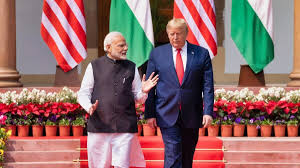 Mumbai, Feb 15: The U.S. government’s move to impose reciprocal tariffs to match higher duties levied by its trading partners is not likely to hurt India much as there are differences in the export profiles of the two countries, economic think tank GTRI said on Friday.
Mumbai, Feb 15: The U.S. government’s move to impose reciprocal tariffs to match higher duties levied by its trading partners is not likely to hurt India much as there are differences in the export profiles of the two countries, economic think tank GTRI said on Friday.Citing an example, the Global Trade Research Initiative (GTRI) said that if the U.S. charges 50% reciprocal tariffs on Indian pistachios because India charges the same, India is happy as it does not export pistachios.
Additionally, for 75% value of the U.S. exports to India, the average tariff is less than 5%, GTRI Founder Ajay Srivastava said.
In contrast, India faces high U.S. tariffs on many labour-intensive goods like textiles, garments, and footwear, ranging between 15-35% on several products, he added.
“Given the differences in the export profiles of the two countries, reciprocal tariffs may not have a significant impact…In the new Trump era, India may wait to see the US decision in April on reciprocal tariffs and then respond in equal measures as we did in June 2019,” Srivastava said.
After talks with Prime Minister Narendra Modi in Washington, U.S. President Donald Trump announced that India will buy more oil, gas and military hardware from America to bring down the trade deficit but asserted that Washington will not spare New Delhi from reciprocal tariffs.
On the trade deal, he said though the details are not yet clear, it could be a limited deal on reciprocal tariffs, expected to be announced in April.
The U.S. has already announced non-reciprocal tariffs of 25% on steel and aluminium.
This is also not the best time for an FTA (free trade agreement) or full trade agreement as the U.S. does not respect FTAs. An example is how the Trump administration has imposed tariffs on Mexico and Canada on steel and aluminium in violation of USMCA (US Mexico Canada) provisions,” Mr. Srivastava said.
The GTRI also said that the U.S. is not clear if the reciprocal tariff applies to specific products or entire sectors.

